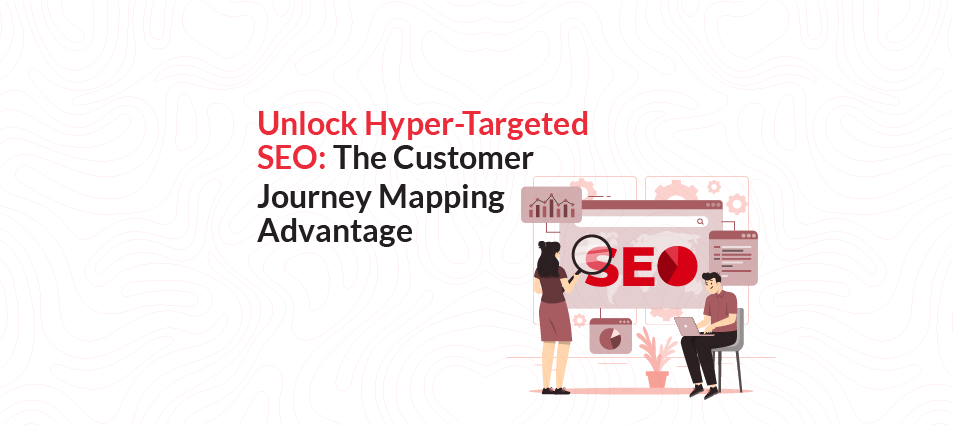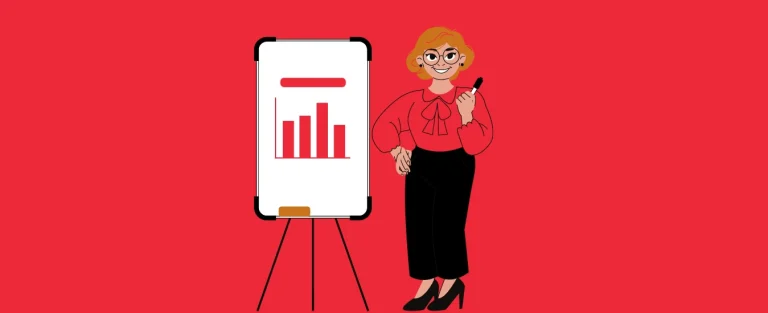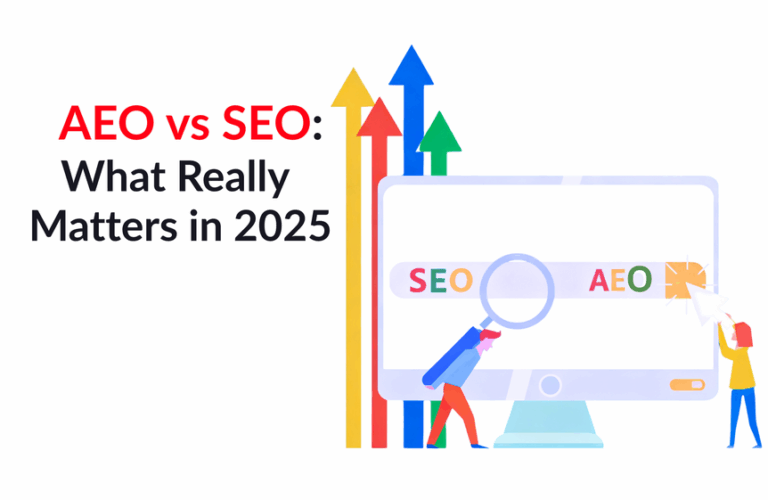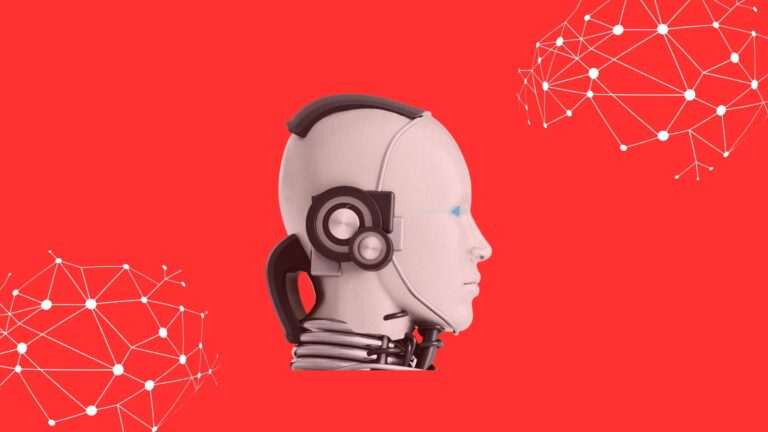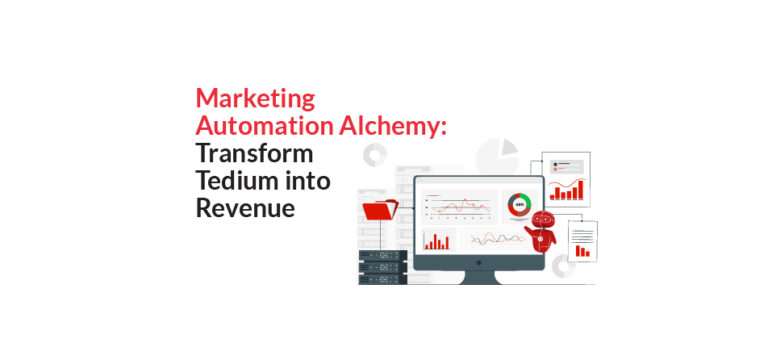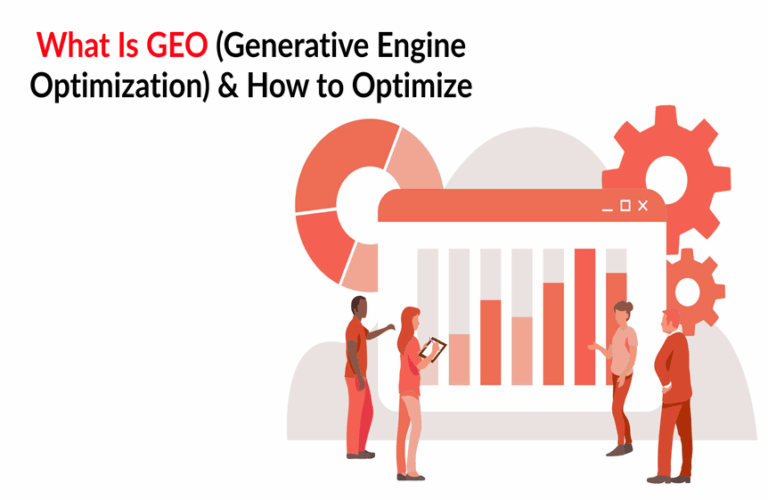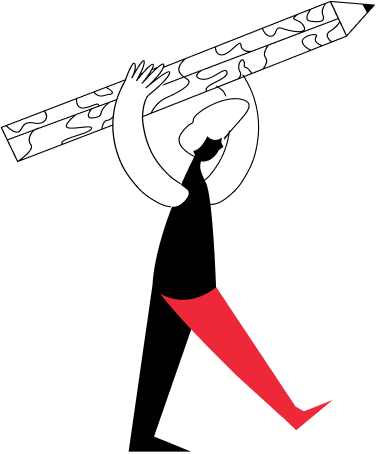Unlock Hyper-Targeted SEO: Mastering Growth with Customer Journey Mapping
As emphasized by “Christopher Hofman” at the SEO Mastery Summit, Client Journey Mapping is not a strategy—it’s the secret to decoding user intent throughout the entire funnel. This blog delves into how brands can make that journey into high-impact growth.
SEO has come a long way. It is no longer only about keywords and rankings — now it’s all about relevance, timing, and knowing the actual intent behind every search. And today, successful brands are the ones who plot intent, rather than metadata. That’s when Customer Journey Mapping (CJM) is made a powerful force in every marketer’s kit.
At Opositive, we’ve redefined this approach through Customer Journey Mapping (CJM), baked into our proprietary GEO (Generative Engine Optimization) framework. The result? SEO that speaks directly to your customers — and converts 10X faster, ad-free.
Why Consumer Journey Map is the Future of SEO
Humans don’t usually end up on a product page and become a customer right away. Instead, they take a serpentine journey of discovery, doubt, comparison, and curiosity — way before they’re ready to purchase.
User Journey Map consists of:
- Awareness – “Why my shower water is cold?”
- Interest – “How to repair a water heater?”
- Evaluation – “Top-rated water heater brands”
- Purchase – “Buy XYZ heater online”
- Post-Purchase – “How to care for XYZ heater?”

Customer Journey Map
Each of these reflects a unique intent, requiring a different content approach.
At Opositive, we’ve seen this play out across multiple industries — especially in home, healthcare, and wellness. In one case, over 70% of organic traffic for a decor brand came from early-stage queries like “how to design a cozy balcony” — not “buy furniture online.” Brands that only focus on purchase-intent miss out on this untapped demand.
How Questions Spread Through the Funnel
| Funnel Stage | Example Questions | Best Content Types |
| Awareness | Why am I losing hair at 25? | Blogs, videos, explainer posts |
| Interest | Natural remedies for hair loss | Guides, infographics, expert articles |
| Evaluation | PRP vs Minoxidil: Which is better? | Comparison pages, testimonials, reviews |
| Purchase | Best PRP clinic near me | Landing pages, CTAs, offer banners |
| Post-Purchase | What to expect after PRP treatment? | Aftercare guides, emails, follow-ups |
When your content addresses all of these stages, you don’t merely rank — you capture attention and establish trust.
The Power of Buyer Intent + Persona Targeting
Each search term is a micro-moment exposing intent. Knowing these moments — through symptom, solution, support, and branded queries — means your SEO can be hyper-personalized and conversion-driven.
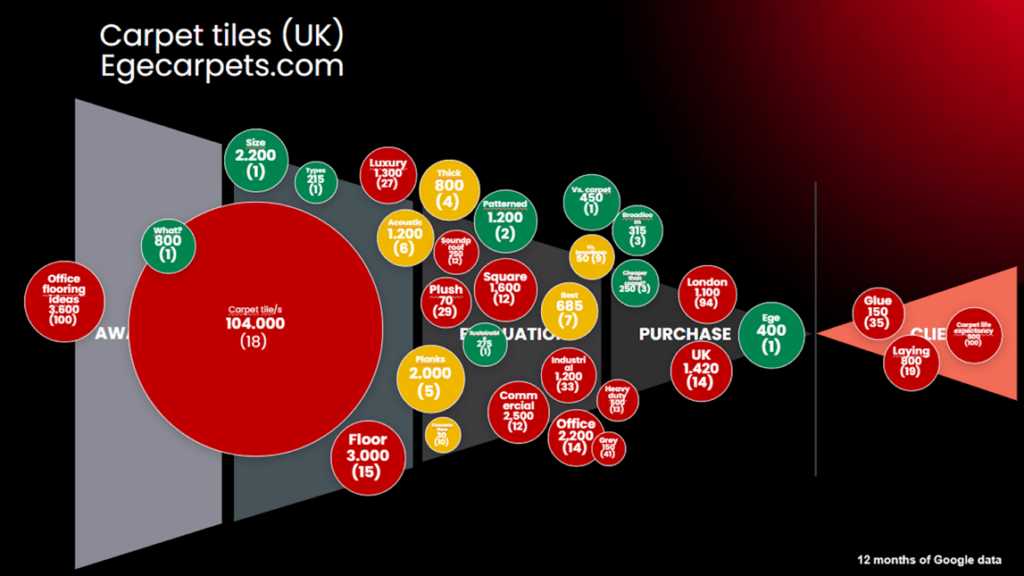
Example – “Carpet tiles” searches distributed across phases of the funnel
At Opositive, we translate these questions into actual customer personas and then match content accordingly — from learning blogs to high-intent product pages — creating a content ecosystem that engages, converts and retains.
By knowing the stage a question is at, brands can produce content that doesn’t merely attract — it navigates.
At Opositive, we examined more than 10,000 searches for a D2C skincare company and observed how micro-intents such as “does niacinamide cause purging” created more engaged sessions compared to wider terms. Mapping these to the journey, we enhanced conversion intent without boosting ad spend.
Where Most Brands Go Wrong
Here’s the truth:
98% of users aren’t ready to buy yet.
And yet, the majority of brands merely focus on bottom-funnel keywords such as “buy now,” “best price,” or “book a demo,” assuming conversions can only occur at the tail end of the buyer’s journey.
What they’re missing:
- Early-stage trust establishment
- Education-driven nurturing
- Intent-dense micro-conversions
In one of our projects with a top quick commerce platform, we tracked questions such as “how to store spinach fresh” and “what is the healthiest late-night snack.” These awareness-stage questions fueled 35X organic visibility increase — while competitors remained anchored at transactional content.
Making Customer Experience Journey Mapping into Measurable Growth
This is how we make Customer Journey Mapping come alive:
- Primary Keyword + Intent Analysis
We determine top keywords via GSC (Google Search Console) and Ahrefs and group them into search intent categories.
- Intent-Funnel Mapping
By working with product teams and utilizing first-party data, we match actual queries with funnel stages.
- AI-Led Content Planning
Through our AI software, we suggest content types such as how-to blogs, video, FAQs — intent-mapped.
- Precision Execution
With briefs that are tailored, media placement, and measurement, we make SEO strategies execute.

Example – “Carpet tiles” searches mapped across stages
The Opositive Advantage
Customer Journey Mapping isn’t theory at Opositive — it’s our competitive advantage. We develop SEO strategies that not only drive traffic, but compel users from interest to conversion. When blended with GEO, it yields:
- Broader Organic Coverage – Engage users at each step, from awareness to loyalty, not only at the moment of purchase.
- Smarter Content ROI – No words wasted. All content is aligned with user intent, so it has a reason to exist.
- High-Quality Leads – We don’t pursue volume, we help brands win ready-to-convert, high-value prospects.
- Seamless Funnel Flow – From initial impression to final conversion, our SEO efforts tie in seamlessly with sales.
For one health-tech brand, we noticed users were dropping off after reading informational content. We introduced mid-funnel modules like “Patient Stories” and “Doctor Q&As” — which lifted lead submissions by 52% without changing the top-ranking content.
We don’t pursue algorithms—we design trips that map to actual user behavior, empowering brands to lead with relevance, trust and performance. People don’t need content. They need clarity. When your SEO approach allows users to see their problem clearly, feel understood in their path, and take smart action — you are no longer just a result on a page. You are the brand they trust.
At Opositive, we’ve witnessed this mindset shift transform SEO from a performance lever to a growth engine — in decor, healthcare, D2C, and B2B. And it all starts with one question: Are we appearing when our audience needs us most — or just when we need them?
Ready to unlock your customer journey with intent-driven SEO?
Let Opositive help you scale smarter, faster and conquer the digital age.
Leave a message with us at hello@opositive.io or Call +91 97999 54477

